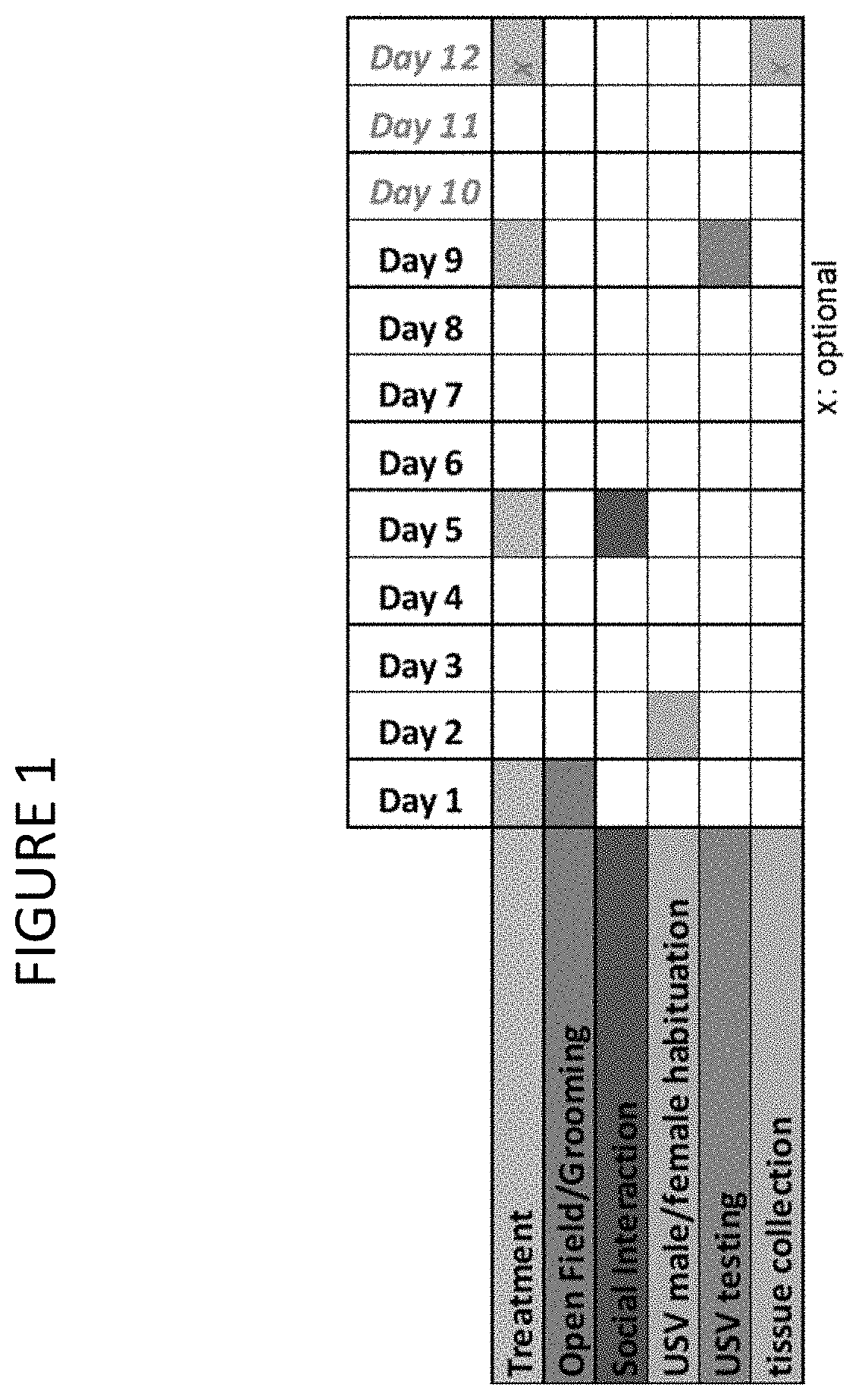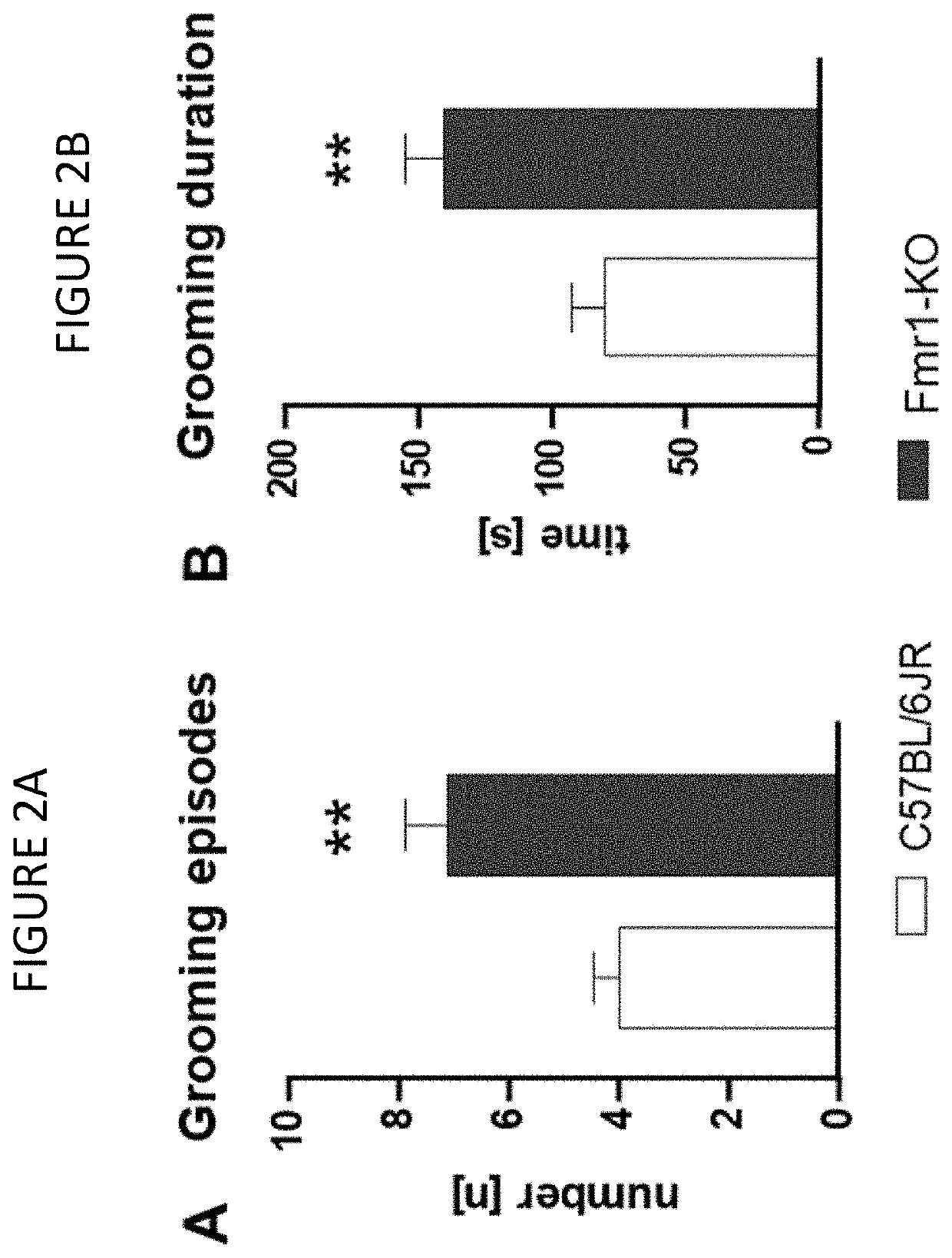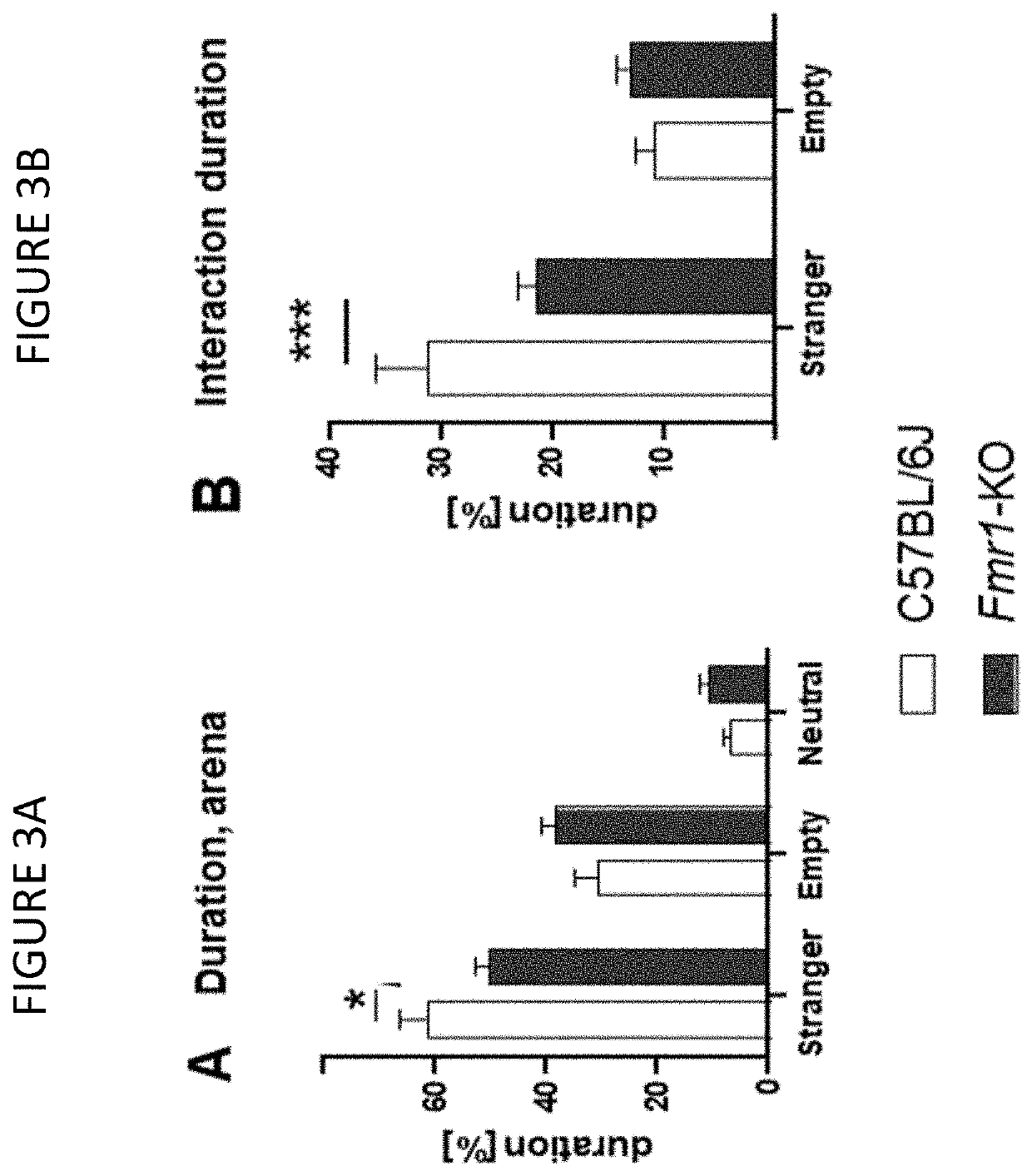Mdma enantiomers
a psychiatric treatment and anti-mdma technology, applied in the field of psychiatric treatment compositions and methods, can solve the problems of increased depression, hyperpyrexia, neurocognitive defects, etc., and achieve the effect of reducing the neurotoxicity of mdma
- Summary
- Abstract
- Description
- Claims
- Application Information
AI Technical Summary
Benefits of technology
Problems solved by technology
Method used
Image
Examples
example 1
[0039]Fragile X syndrome (FXS) is known as a monogenic cause of Autism Spectrum Disorders (ASD) and one of the most common inherited forms of intellectual disability. Patients with FXS not only suffer from intellectual disability, but also manifest core and secondary phenotypic traits of ASD such as hyperactivity, repetitive behaviors and problems with executive and language problems causing sociability impairments. The Fmr1-KO mouse has a neomycin resistance cassette replacing exon 5 of the fragile X mental retardation syndrome 1 (Fmr1) gene causing an increase in the number of CGG repeats that lead to hypermethylation of the Fmr1 gene, therefore inhibiting FMR protein production. Fmr1-KO mice are bred on a C57BL / 6J background.
[0040]The fragile X mouse model Fmr1-KO presents strong ASD-like behaviors such as increased activity and hyperactivity, decreased anxiety, strong repetitive behavior as well as reduced social behavior and vocalization. The Fmr1-KO mouse model thus allows in ...
PUM
 Login to View More
Login to View More Abstract
Description
Claims
Application Information
 Login to View More
Login to View More - R&D
- Intellectual Property
- Life Sciences
- Materials
- Tech Scout
- Unparalleled Data Quality
- Higher Quality Content
- 60% Fewer Hallucinations
Browse by: Latest US Patents, China's latest patents, Technical Efficacy Thesaurus, Application Domain, Technology Topic, Popular Technical Reports.
© 2025 PatSnap. All rights reserved.Legal|Privacy policy|Modern Slavery Act Transparency Statement|Sitemap|About US| Contact US: help@patsnap.com



